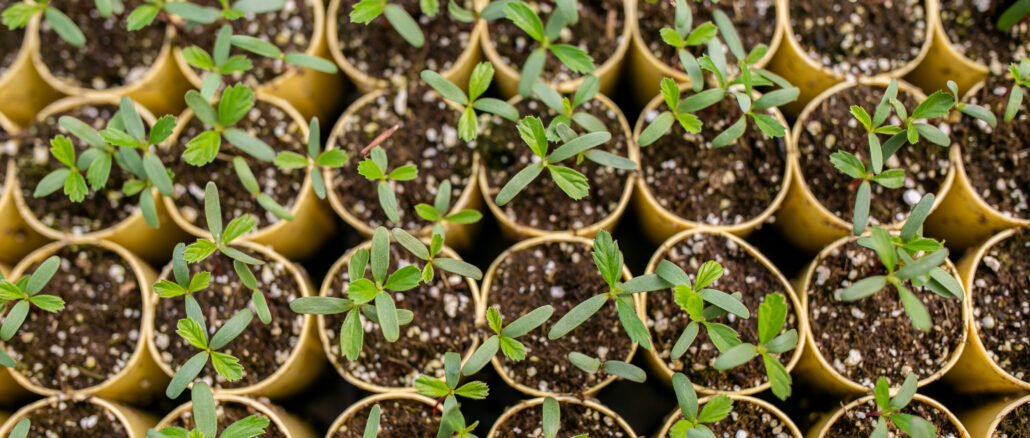
Support Northern Colorado Journalism
Show your support for North Forty News by helping us produce more content. It's a kind and simple gesture that will help us continue to bring more content to you.
BONUS - Donors get a link in their receipt to sign up for our once-per-week instant text messaging alert. Get your e-copy of North Forty News the moment it is released!
Click to DonateSeed banks are more than just storage facilities for seeds; they are critical institutions dedicated to the conservation of plant biodiversity. In an era where environmental challenges threaten the diversity of plant species, seed banks play a pivotal role in preserving genetic variety essential for future generations. This article explores the scientific principles that govern seed banks and highlights their vital contribution to biodiversity preservation.
The Science of Seed Conservation
The core function of a seed bank is the preservation of seeds, but the science behind how these seeds are kept viable over extended periods is complex and fascinating. Seeds are living organisms that can remain dormant yet viable for years, sometimes even centuries, under the right conditions. The key to successful seed conservation lies in understanding each seed type’s biological and environmental needs.
Seed banks typically control several key environmental factors to prolong seed viability: temperature, moisture, and oxygen levels. By reducing temperatures and moisture levels, seed banks can significantly slow down the metabolic processes of seeds, thereby delaying germination and extending their shelf life. For example, many seed banks store seeds at temperatures below freezing, which can effectively pause their internal biological clocks.
Moreover, seed banks also utilize advanced technologies to monitor and manage the genetic health of seeds. This involves regular testing for seed viability and germination rates to ensure that seeds can still sprout after being stored for long periods. These tests are crucial for maintaining the quality and effectiveness of seed banks as biodiversity reservoirs.
Genetic Diversity and Ecosystem Resilience
One of seed banks’ most significant contributions to biodiversity preservation is their role in maintaining genetic diversity within and across plant species. This genetic diversity is crucial for the health and resilience of ecosystems. It enables plant populations to adapt to environmental conditions and challenges like diseases, pests, and climate change.
Seed banks collect and store seeds from various plant species, including rare, endangered, and common varieties. By preserving different genetic variations of plant species, seed banks maintain a pool of traits that can be used to regenerate species or enhance genetic traits in response to ecological pressures. For instance, if a particular plant species starts declining due to a new fungal disease, researchers can look into seed bank collections for genetic variants of that species resistant to the disease.
Furthermore, seed banks often collaborate with restoration ecologists to reintroduce plant species into depleted habitats. These reintroductions are crucial for restoring ecological balances and ensuring that natural selection processes continue to operate, further strengthening the genetic diversity and adaptability of plant populations.
Global Networks and Collaboration in Seed Banking
Seed banking is a global endeavor, with many banks participating in international networks to share seeds and knowledge. This collaboration enhances seed banks’ capacity to preserve a wider variety of plant species than would be possible in isolation. Global seed banking initiatives such as the Millennium Seed Bank Partnership and the Svalbard Global Seed Vault are examples of how countries can work together to safeguard plant diversity at a scale that matches global biodiversity challenges.
These global networks also facilitate the exchange of scientific techniques and advancements in cryopreservation and other seed storage technologies. By working together, seed banks can develop more effective methods for seed conservation and ensure that seeds from different climates and conditions are stored in ways that maximize their viability.
Moreover, international collaboration helps balance the focus between global food security and the conservation of wild species, ensuring that agricultural and ecological interests are served. This is particularly important in developing strategies to combat global issues like food insecurity and climate change, which require conservation and innovation in agricultural practices.
Seed banks are indispensable guardians of biodiversity, providing a safety net against the loss of plant species in the face of environmental change. By understanding and harnessing the science of seed conservation, these institutions play a crucial role in maintaining ecosystem resilience through genetic diversity. Their efforts, bolstered by global collaboration, ensure that our natural heritage remains robust and capable of adapting to our planet’s changing needs. Therefore, seed banks’ work is not just about preserving the past but securing the future of our ecosystems.
Strategies for Overcoming Seed Dormancy
Seed dormancy is a natural survival mechanism that prevents seeds from germinating until conditions are favorable. In seed banks, overcoming this dormancy is crucial for testing seed viability and for successful germination when seeds are needed for restoration or research purposes. Different seeds require specific treatments to break dormancy, which may involve simulating natural environmental conditions that the seeds would experience in the wild.
For instance, some seeds require a period of cold stratification, mimicking winter conditions, to activate germination processes. This is commonly done by storing seeds in a refrigerator for a specified period. Other seeds might need scarification, which involves physically breaking, scratching, or softening the seed coat to allow water to penetrate and initiate germination. Techniques vary widely across species, and understanding the right method for each type of seed is a critical aspect of the science behind seed banks.
Enhancing Seed Viability Through Cryopreservation
Cryopreservation is a technique used by seed banks to extend the viability of seeds by freezing them at ultra-low temperatures. This process almost completely halts their metabolic and physical processes, putting them in a state of suspended animation. Cryopreservation is particularly useful for seeds that do not respond well to traditional drying and cooling methods used in seed banks.
The process begins with carefully preparing the seeds to ensure they are clean and free of moisture that could form ice crystals during freezing. Seeds are then slowly cooled to prevent shock before being stored in liquid nitrogen tanks at temperatures near -196 degrees Celsius. This method is ideal for preserving genetic material for extended periods, potentially for hundreds of years, without significant loss of viability. Cryopreservation not only helps maintain genetic diversity but also aids in conserving seeds of rare and endangered species that might have very few remaining populations in the wild.
Public Education and Engagement in Seed Conservation
Public education and engagement are vital components of the mission of seed banks. By raising awareness about the importance of biodiversity and conservation, seed banks can garner support for their efforts and inspire community involvement. Educational programs can include workshops, seminars, and seed-saving classes that teach people about the importance of preserving plant diversity and how they can contribute to these efforts at a local level.
Additionally, many seed banks develop partnerships with schools and community groups to create seed-saving projects. These projects serve educational purposes and help build local seed collections that preserve plant varieties unique to specific areas.
Engaging the public also fosters a sense of stewardship and highlights individuals’ role in conserving biodiversity. Through these educational initiatives, seed banks enhance their conservation capabilities and empower communities to act as active participants in preserving their natural heritage. Finally, if you are wondering “where to buy cannabis seeds”, check out the following article for the best options!
